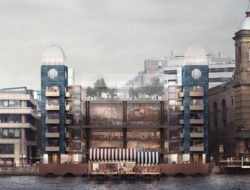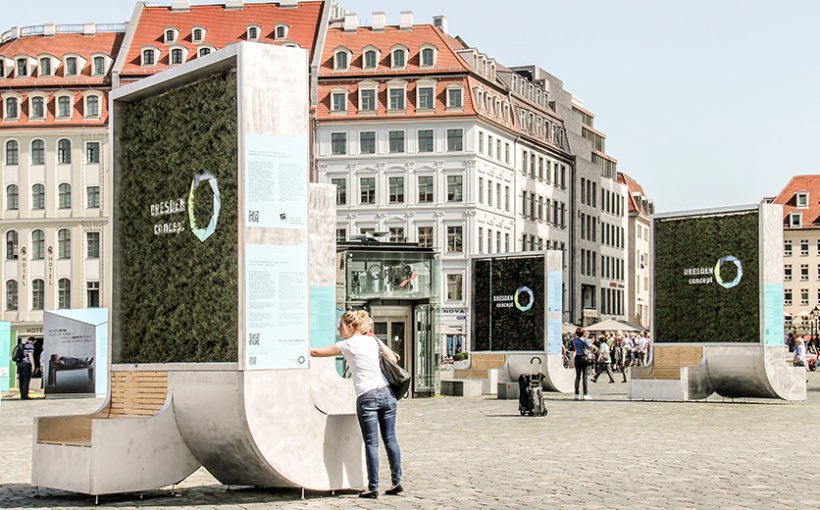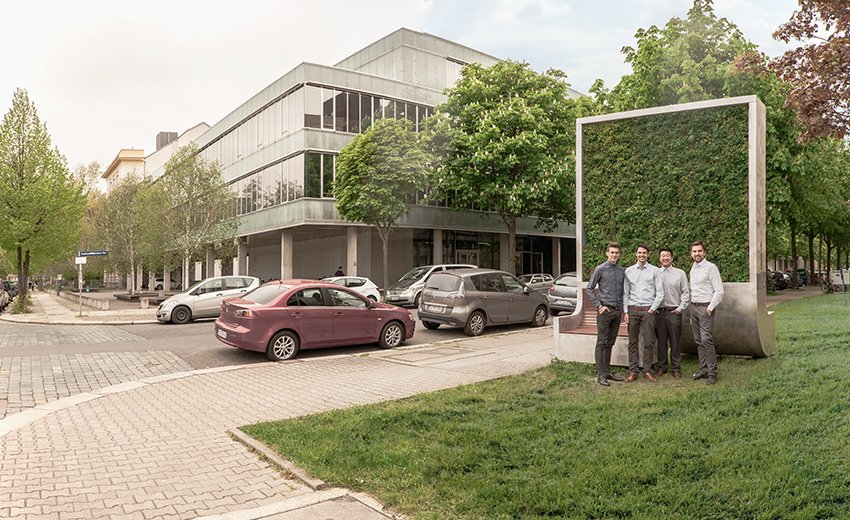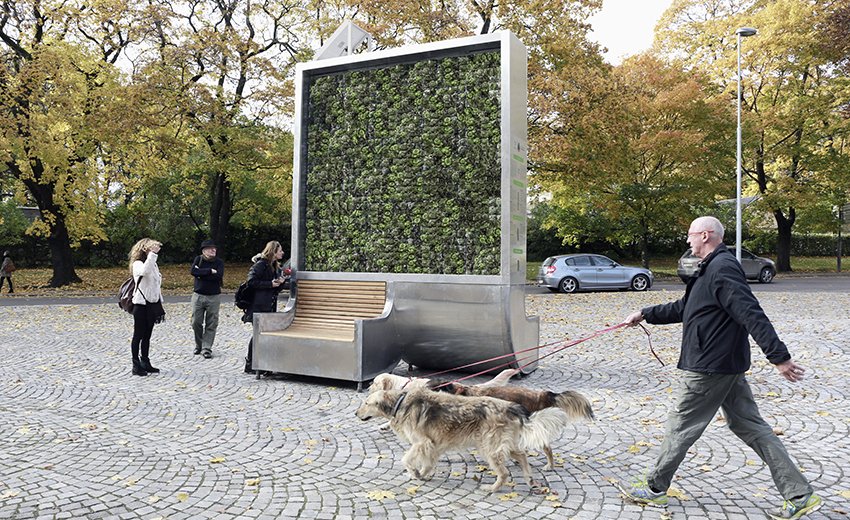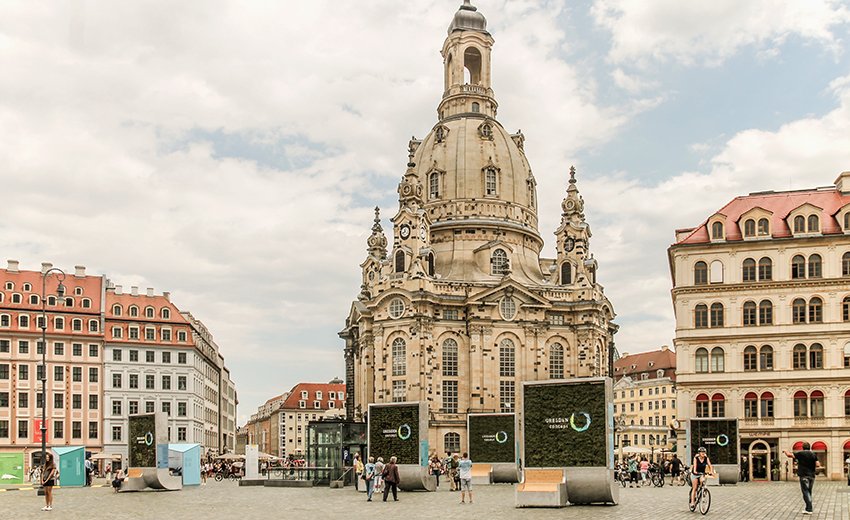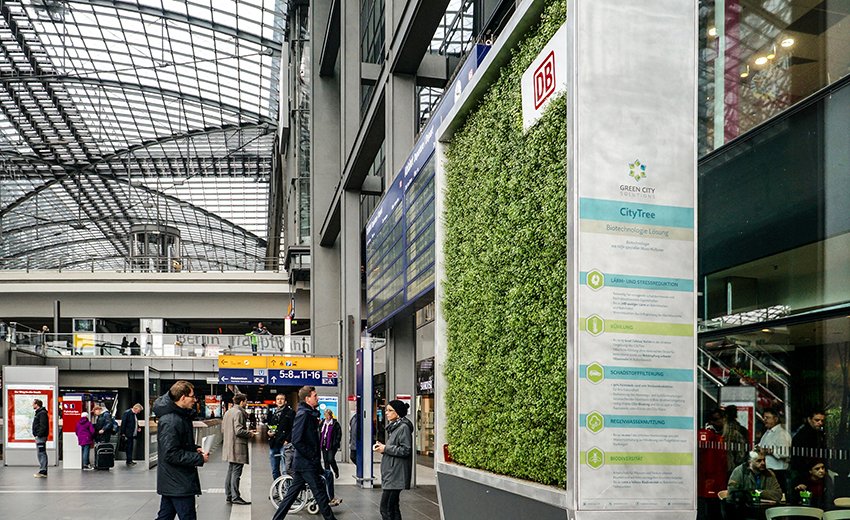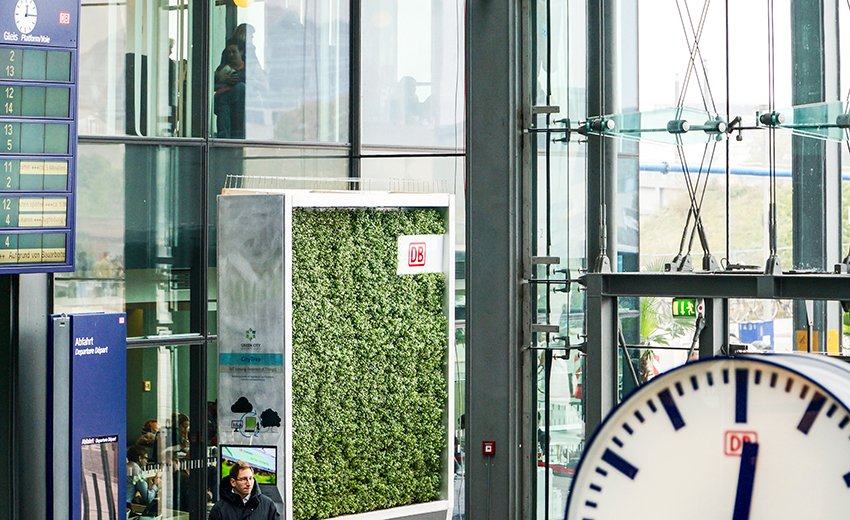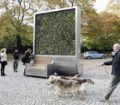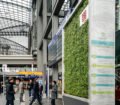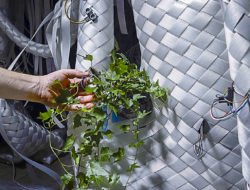Sixteen square meters of greenery, a bench and a tank: this is the device of the “City Tree”, a piece of urban furniture that filters as much CO2 as a small forest.
Fighting air pollution with street furniture? Among the numerous initiatives in this field, the German company “City Tree” offers a public bench with an absorbent panel. The magic formula: a vegetable moss positioned on its wall that has nitrogen dioxide absorption capacities equivalent to 275 trees … more than 2 football fields or, even more precisely, 250 grams of particles absorbed per day.
Like many elements of nature, the City Tree works in a cyclic fashion. Bacteria, present on the surface of the foam, attract polluted particles and absorb them by photosynthesis. After this ingestion, the bacteria die and themselves serve as food for the foam. The pollution ultimately becomes a nutritional source. At a time when trees are becoming increasingly scarce and pollution is increasingly present, this invention makes it possible to store up to 240 tonnes of CO2 per year.
In addition to its depolluting role, the City Tree is also a high-tech tablet. Not only can it offer a Wi-Fi hotspot or an electrical charging station, but behind its two public benches it conceals a 1,000-litre water tank, supplied by rain. A solar panel provides sensors that measure the degree of humidity in the air and, in case of drought, they operate the pump that distributes the water to the multitude of small plants. The invention also enables the monitoring of weather conditions such as water quality, temperature and ambient humidity. The icing on the cake is that it can even decrease the temperature in the vicinity to a distance of 5 metres and thus combat urban heat islands.
Mineralizing the city
The properties of the wall have been proven in practice. In the cities that are experimenting with it – Paris, Berlin, Oslo – the air is cleaned of nitrogen dioxide by at least 15%. But there is one concern: at the pilot stage, the plant wall still suffers from a minor irrigation problem. In Brussels, where a City-Tree was installed at the Mont des Arts, the plants also seem to dry up. “Given the high temperatures that Belgium experienced this summer, supplying water from the tank was not enough so we asked the company that provided us with the city tree, Green City Solutions, to increase the frequency of the irrigation,” explains Arnaud Bastogne, energy manager for the City of Brussels.
Engaged in an ambitious “Climate Plan”, the Belgian capital is giving this intelligent furniture three months to prove itself. After this period, a balance will be established thanks to the sensors present in the plant wall. If it turns out to be convincing, the system devised by the German company could be set up in the less mineralized districts of the city. The pedestrian centre is clearly in the viewfinder because the passage of the metro prevents trees being planted and allows greening only at the price of heavy investments. But some people are already questioning the effectiveness of the furniture because, in a country where pollution kills 13,000 people a year, it is better to tackle the sources directly rather than cure them a posteriori.
Tags: City Tree, Green City Solutions, green wall, pollution, urban furniture


































